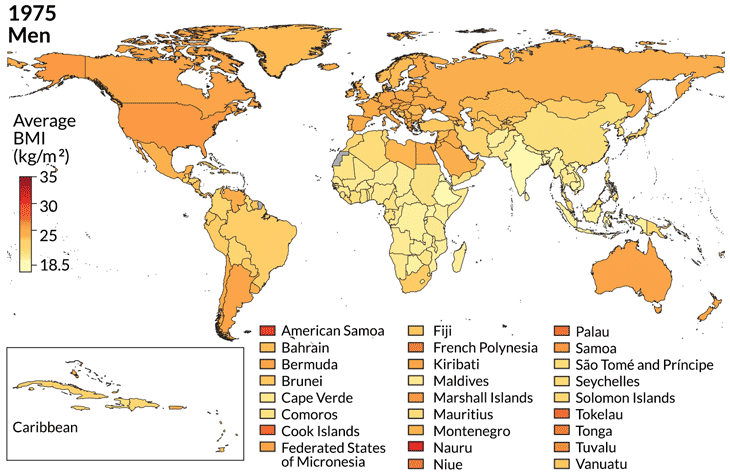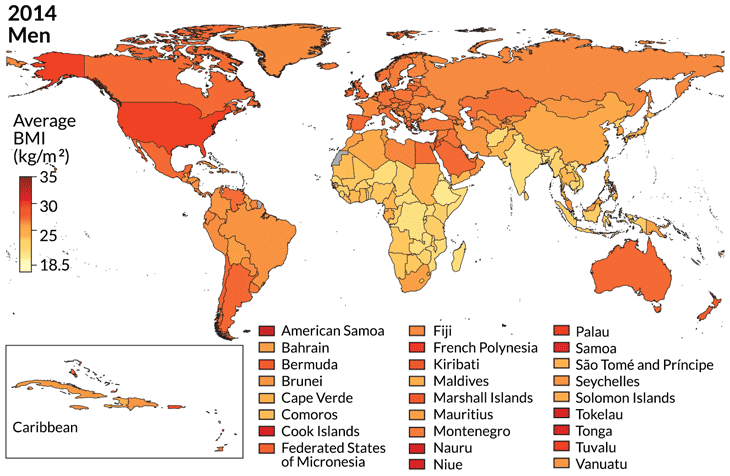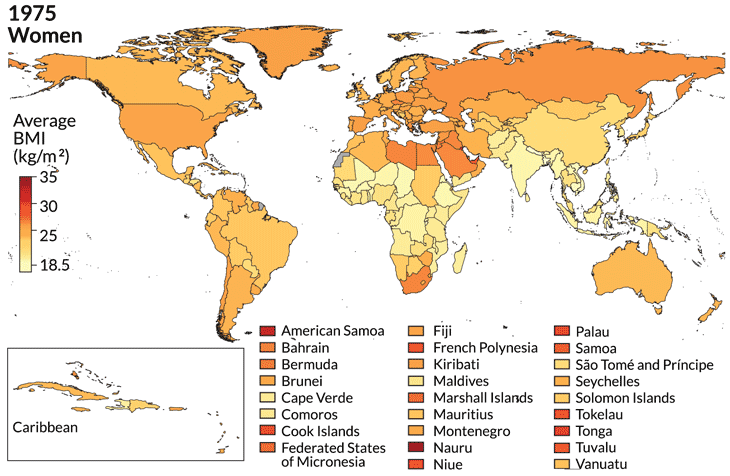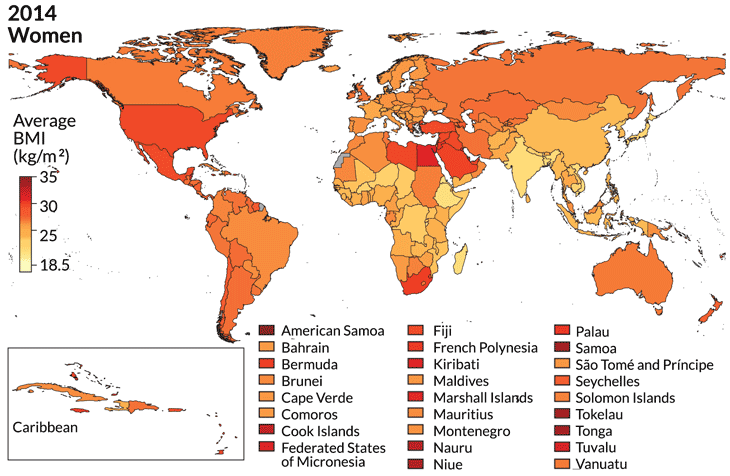Global obesity rates continue to climb
More than 640 million people now fat, BMI data suggest
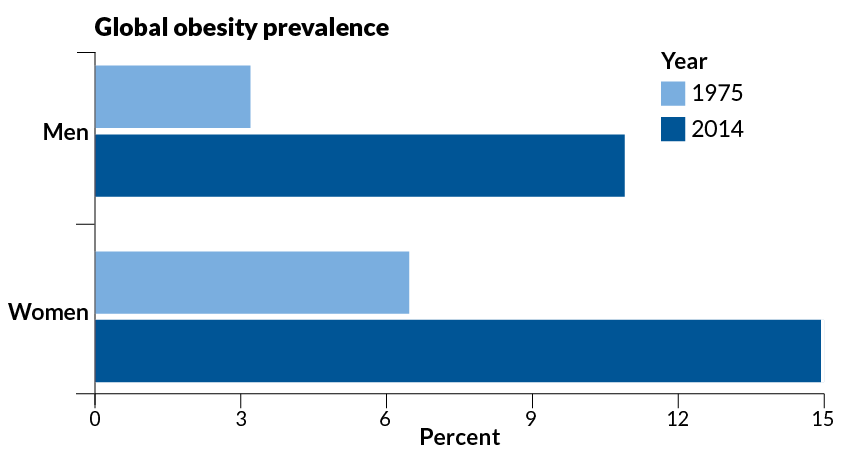
GETTING BIGGER The percentage of obese people in the world has shot up in the past 40 years, more than tripling for men and more than doubling for women from 1975 to 2014.
NCD-RisC/Lancet 2016
